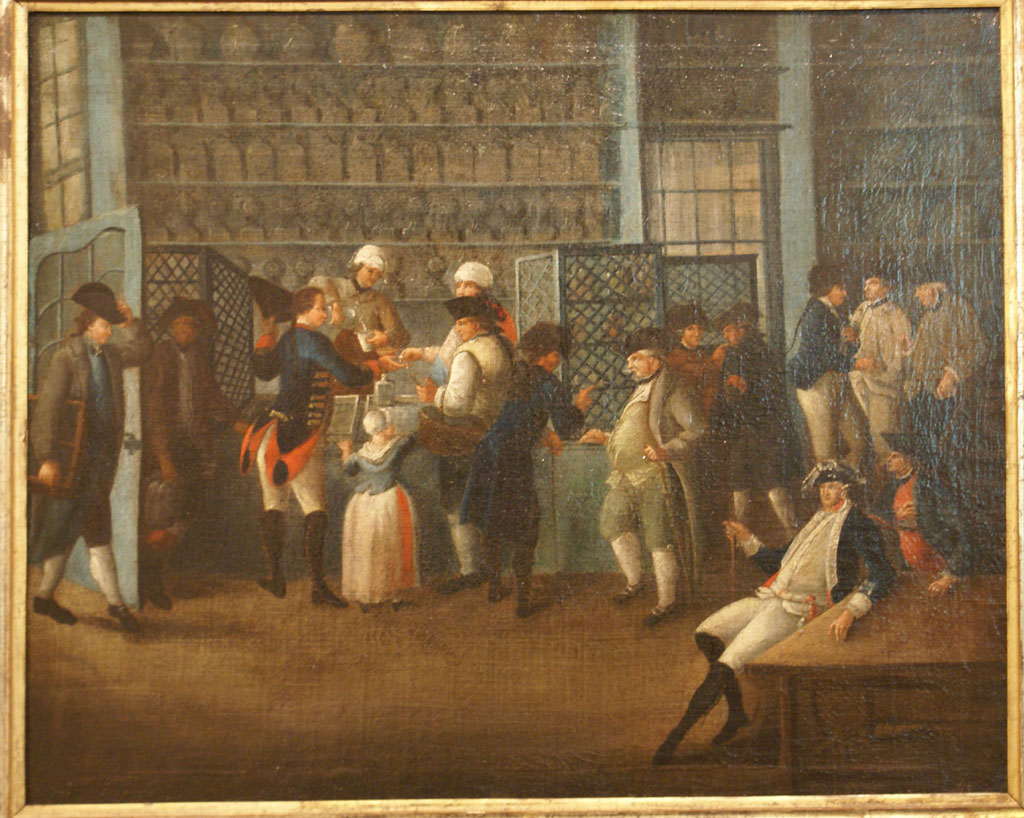Berlin, Germany/berlin152
Previous | Home | NextThis painting in the Märkisches Museum portrays an apothecary around 1775, that is, the same time Klaproth was at the Zum weißen Schwan. This gives insight to the appearance of the Apotheke during the time zirconium and uranium were discovered. Apothecaries would import raw opium, willow bark (the source of aspirin), oak-apples (oak galls, for making inks) and other herbs, barks, roots, and seeds, for grinding and distilling into prescriptions; but a major part of their profits would often come from tobacco, sugar, and drink (e.g., Branntwein, or brandy). In addition, pharmacies would sell soaps, perfumes, grooming ointments, and cosmetics, and pigments (white lead paint, black lead powder, etc). {LINK: to Heidelberg apothecary museum}
